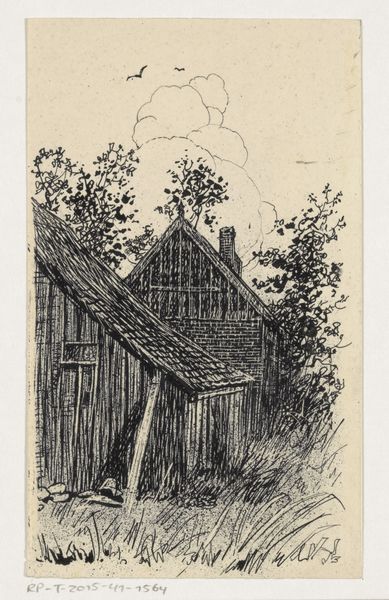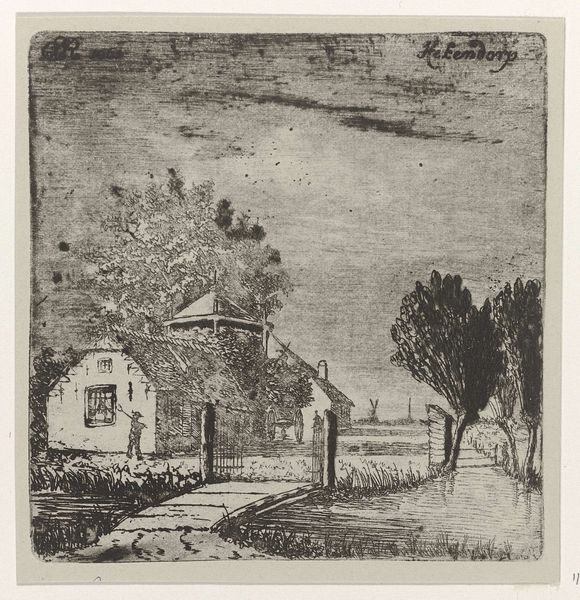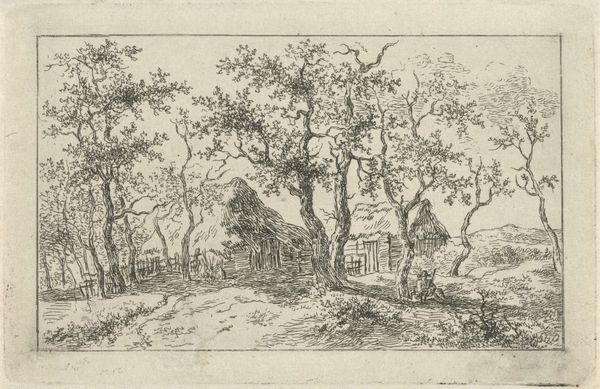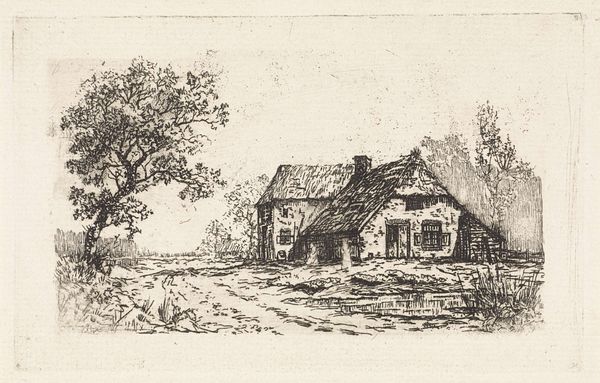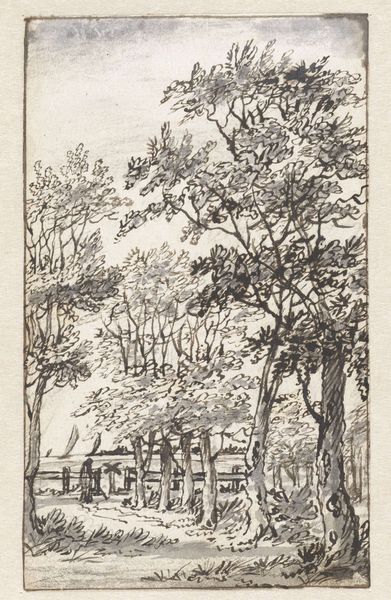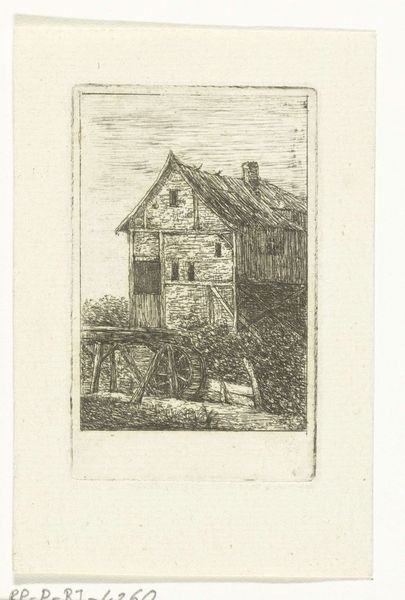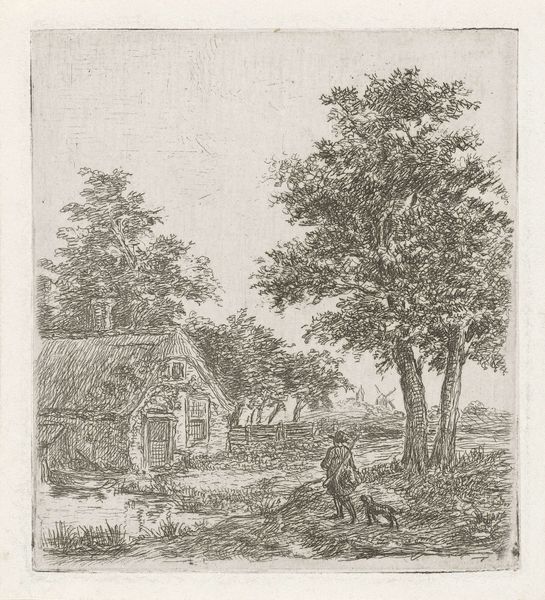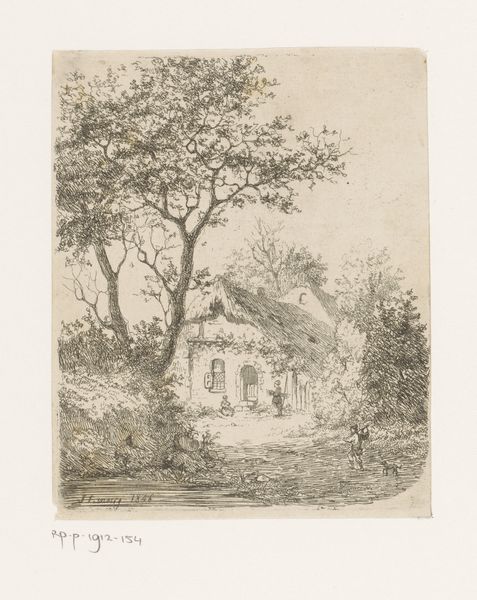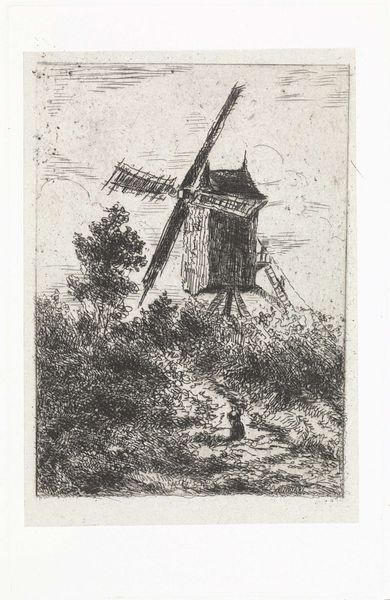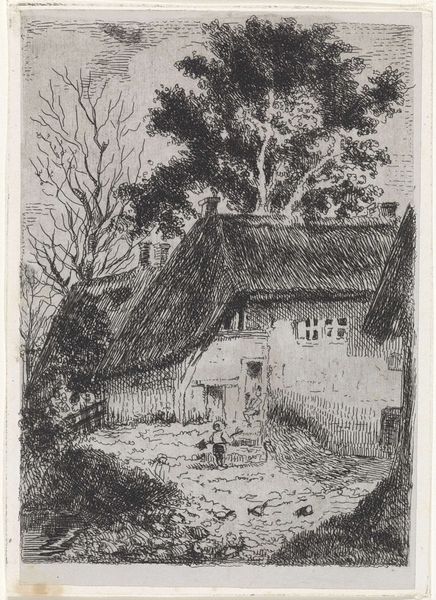
drawing, ink
#
drawing
#
pen drawing
#
landscape
#
ink
#
genre-painting
#
realism
Dimensions: height 75 mm, width 60 mm
Copyright: Rijks Museum: Open Domain
Editor: This drawing, titled "Moeder met kind wandelend voorbij een huis," roughly translates to "Mother with Child Walking Past a House" and it's by Anthonie van den Bos. It's made with pen and ink sometime between 1778 and 1838. It feels very personal, like a scene the artist simply observed. What do you make of it? Curator: It's fascinating to consider this drawing within the context of 19th-century Dutch art, where Realism was gaining traction. Van den Bos’ choice to depict an everyday scene – a mother and child – reflects a broader interest in the lives of ordinary people. How does it sit within what was considered the Dutch Golden age, which precedes it? Editor: Well, I think that Golden Age Dutch art focused more on lavish scenes of wealthy merchants. Here, the simple composition and humble subject feels… well, democratic almost? Curator: Precisely! This is about turning the artistic lens to different corners of society. What strikes me most is the artist's attention to detail despite the work's scale and limited materials. Consider the level of detail in the tree's foliage and how that evokes a tangible connection to the landscape. This is at a time of great social and political upheaval with increasing democratisation, so it is interesting to wonder how this affects representation and how it is consumed? Editor: So, this everyday scene becomes, in its way, a political statement, simply by existing and being deemed worthy of representation? Curator: Indeed. The act of representing this family is about creating a connection between the public and people they wouldn’t necessarily engage with in fine art otherwise. This is no longer reserved for a privileged clientele but has popular appeal through public display. Were drawings like this perhaps used to educate or inform others about less-well-known elements of society? Editor: I never thought of it that way! I was too focused on the 'simple' subject matter. Now I realize this artist might be deliberately challenging the established norms. Curator: Exactly. Art isn't just about aesthetics; it's a mirror reflecting societal values and, more importantly, sparking critical discussions about representation.
Comments
No comments
Be the first to comment and join the conversation on the ultimate creative platform.
